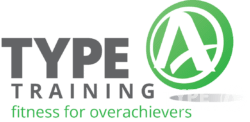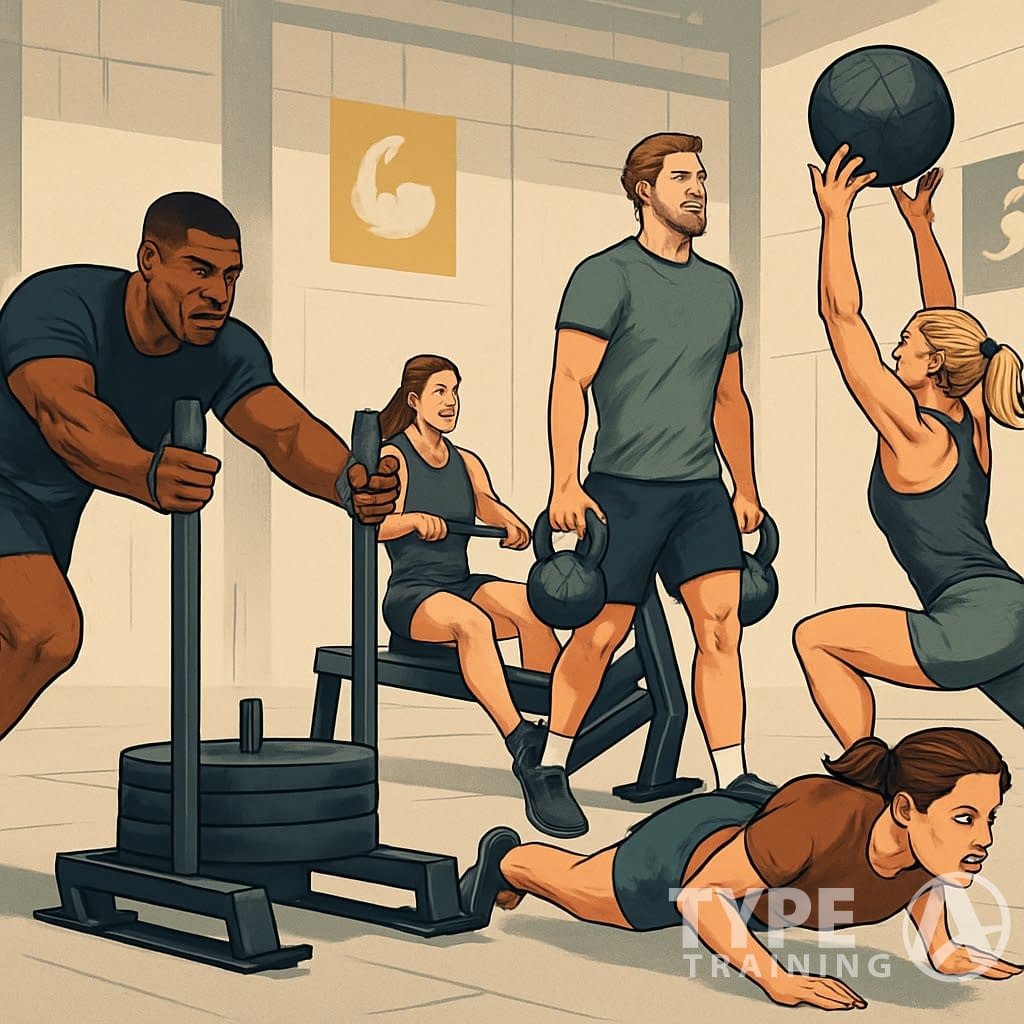Success in a HYROX event takes more than just showing up fit. You’ve got to understand the race format, balance endurance with strength, and manage your effort across every station.
Understanding who can compete in HYROX is crucial for success.
Many people wonder who can compete in HYROX, and the answer is that it is designed for a wide range of fitness levels.
To succeed in HYROX, you need to master running efficiency, functional strength, and smart pacing from start to finish.
Popular posts:

You’ll face eight rounds of running paired with full-body workout stations. Each segment challenges your stamina and power while testing your ability to transition smoothly and keep energy in reserve.
Understanding who can compete in HYROX is essential as it encourages participation from varied athletes.
Building consistent running ability and practicing race-specific movements matter a lot here. Learning how to handle fatigue gives you a real edge in competition.
Ultimately, anyone curious about who can compete in HYROX should embrace the challenge and prepare accordingly.
Key Takeaways
- Learn the race format and manage pacing across each stage
- Build both endurance and strength with focused training
- Support performance with smart recovery, fueling, and mindset
Mastering the HYROX Race Format

The HYROX race combines endurance running with functional workout stations. You’ll get tested on strength, speed, and efficiency.
Knowing who can compete in HYROX can inspire you to step out of your comfort zone and join the event.
How you handle each station and move between them can make or break your race. Avoiding common mistakes saves you time and energy.
Identifying who can compete in HYROX helps set realistic expectations for athletes entering the competition.
Understanding Workout Stations
A HYROX event follows a set format: run 1 km, then complete one workout station, repeated eight times. This structure makes pacing and consistency absolutely critical.
The stations usually include ski erg, sled push, sled pull, burpee broad jumps, rowing, farmer’s carry, sandbag lunges, and wall balls. Each station works different muscle groups and forces you to recover on the run.
Train these movements under fatigue, not just in isolation. For example, try sled pushes right after a hard run interval to simulate race conditions.
This helps you learn how your body reacts when your heart rate is already high.
Keep your technique simple and efficient. For example:
- Ski erg: drive with legs first, then arms.
- Sled push: stay low, use short powerful steps.
- Rowing: focus on consistent rhythm, not max effort.
Transition Techniques
In a HYROX competition, transitions between running and workout stations can separate top performers from the rest. Even small delays add up over eight rounds.
Plan how to enter and exit each station. Try slowing your pace in the last 50 meters of a run so you can start the station with better control.
Set up quickly and avoid wasted movement. Grip equipment right away, adjust your stance just once, and get started.
If you pause too long, your heart rate spikes and you’re not making progress. Think of transitions as part of your race strategy.
A smooth 10-second setup beats rushing and losing form, which could force you to rest longer later.
Common Race Mistakes
Many athletes may ask who can compete in HYROX, and the truth is, anyone willing to train can join.
A lot of athletes underestimate pacing in their first HYROX race. Starting too fast on the opening runs often leads to burnout halfway through.
Aim for steady splits instead of chasing early speed. Efficiency in workout stations matters too.
Poor sled technique or sloppy wall balls waste energy and increase the chance of no-reps. Practice good form during training.
Don’t ignore hydration and fueling. Even though the race lasts about 60–90 minutes for most, dehydration or low energy can slow you down.
When considering who can compete in HYROX, remember that determination plays a key role in success.
Plan small sips of water and light fueling before the event. And don’t skip recovery between training sessions.
Overtraining makes you more prone to injury and can derail your preparation.
Building Endurance and Running Performance
Improving your HYROX results depends on your ability to sustain effort over long periods. Managing fatigue and keeping a steady pace between stations are key.
Understanding who can compete in HYROX is a crucial part of training effectively.
You need to train both your aerobic system for lasting energy and your ability to handle higher intensities.
Aerobic Base Development
A strong aerobic base lets you handle the work volume in HYROX. Build it by running at an easy to moderate pace for 30–60 minutes.
These runs should feel controlled. You should be able to breathe comfortably and talk.
Aim for 2–3 aerobic sessions per week. This steady mileage improves your heart’s efficiency and helps you recover faster between high-intensity efforts.
It’s important to discuss who can compete in HYROX, as it can motivate others to join the ranks.
You can also add low-impact endurance work, like cycling or rowing, to reduce joint stress. Just keep the effort light to stay in the right zone.
Interval Training Strategies
Intervals help you tolerate fatigue and recover quickly—just like in HYROX. Alternate short bursts of high intensity with periods of active recovery.
Run 400 meters at race pace, then jog 200 meters and repeat. Or try 2 minutes hard / 1 minute easy, repeated 6–8 times.
These workouts improve your lactate threshold, making it easier to sustain faster paces. Keep intervals under 5 minutes at high intensity.
Many athletes are curious about who can compete in HYROX, and the answer is that it welcomes everyone.
Limit these workouts to 1–2 times per week to avoid overtraining.
Tempo Runs for Race Simulation
Tempo runs get you ready for the sustained effort HYROX demands. Run at a “comfortably hard” pace—faster than easy, slower than all-out.
Try 20–30 minutes at tempo pace after a warm-up. This helps your body clear lactate and hold a steady rhythm under fatigue.
You can also break tempo work into segments, like 3 x 10 minutes at tempo pace with short recovery jogs. It’s a good way to practice pacing and mimic the continuous effort of a race.
Essential Strength and Functional Training
HYROX success depends on building strength that works for race stations—not just gym numbers. You need movements that combine power, stability, and endurance.
Your body has to handle heavy loads, repeated efforts, and transitions under fatigue.
Sled Push and Sled Pull Techniques
The sled push and sled pull are some of the toughest HYROX stations. Both require lower body strength, strong posture, and good technique.
For sled pushes, focus on leg drive. Keep your chest low, core tight, and push through the balls of your feet.
Short, powerful steps usually work better than long strides. Training with squats, deadlifts, and heavy step-ups builds the strength you need.
The sled pull demands grip strength and upper body endurance. Use a strong hand-over-hand motion, hips low, core engaged.
Practice heavy rows, rope pulls, and farmer’s carries to boost pulling power and stability.
A simple training split could be:
| Exercise | Sets x Reps | Focus |
|---|---|---|
| Back Squat | 4 x 6 | Leg strength |
| Deadlift | 3 x 5 | Posterior chain power |
| Rope Pull | 4 x 20m | Grip + pulling strength |
Wall Balls and Walking Lunges
Training properly will answer the question of who can compete in HYROX for many aspiring competitors.
Wall balls and walking lunges test your strength and conditioning, especially late in the race. Managing fatigue here is huge.
With wall balls, squat mechanics matter most. Keep your heels down, chest up, and drive through your hips.
Use a smooth rhythm: catch the ball low and flow into the next squat. Practicing front squats and thrusters helps a ton.
Walking lunges challenge leg strength and balance. Step long enough to use your glutes, but not so far you lose stability.
Keep your core braced to avoid leaning forward. Weighted lunges, Bulgarian split squats, and burpee broad jumps all prepare you for this station.
Farmer’s Carry and Grip Strength
The farmer’s carry might look simple, but it exposes weaknesses in grip, posture, and core stability.
Grip strength often gives out before your legs. Train with farmer’s carries, dead hangs, and heavy kettlebell holds.
Change up the time and distance to build both endurance and max strength. Posture is just as important.
Keep your shoulders back and avoid leaning forward. Strength exercises like deadlifts and rows help stabilize your upper back.
Add carries into your weekly strength workouts to get used to moving under load.
Core Strength and Stability
A strong core supports every HYROX station. It keeps your spine stable during sled pushes and helps you stay upright in lunges.
Focus on both core strength and stability. Planks, side planks, and anti-rotation holds build endurance.
Movements like hanging leg raises, ab rollouts, and loaded carries improve strength under tension.
By identifying who can compete in HYROX, athletes can tailor their training to ensure success.
Dynamic core training matters too. Try rotational work with medicine balls or landmines. You’ll need to twist, turn, and brace under fatigue.
Train your core consistently so your body stays efficient and balanced throughout the race.
Optimizing Recovery and Mobility
Your training gains rely on how well you recover—maybe more than you think. Proper rest, active recovery, and mobility work help reduce fatigue and lower injury risk.
Rest Days and Active Recovery
When you start questioning who can compete in HYROX, remember that dedication is key.
Rest days let your muscles and nervous system repair from training stress. Without them, you risk overtraining and injury.
Instead of doing nothing, try active recovery like light cycling, swimming, or walking. These boost blood flow and reduce stiffness.
You should also focus on hydration and balanced nutrition during recovery days. Adequate fluids, protein, and carbs help restore energy and repair muscle.
A simple weekly structure might look like this:
| Training Load | Recovery Approach |
|---|---|
| High-intensity session | Full rest or light activity |
| Moderate session | Mobility drills or easy cardio |
| Low-intensity session | Normal movement, no added recovery needed |
Mobility Work for Injury Prevention
Mobility work keeps your joints moving through their full range of motion. This reduces tightness and helps you move efficiently in lunges, squats, and sled pushes.
Daily dynamic stretches like hip openers, thoracic rotations, and shoulder drills prep your body for training. Static stretches after workouts can improve flexibility and ease post-session stiffness.
Foam rolling and banded mobility drills help release tension in muscles and connective tissue. They’ll also support recovery by improving circulation and reducing soreness.
Aim for at least 10–15 minutes of mobility work on training and rest days. Consistent practice lowers the risk of strains and helps you keep good technique, even when you’re tired.
Nutrition and Hydration for Peak Performance
Identifying who can compete in HYROX can lead to a stronger community of fitness enthusiasts.
What you eat and drink shapes your energy, recovery, and how steady you feel on race day. Fueling right boosts endurance. Staying hydrated keeps you strong and focused at every station.
Balanced Meals and Macronutrients
You need a good mix of carbohydrates, protein, and healthy fats to train and compete well. Carbs are your main energy source, especially for tough intervals and long efforts.
Try to get most of your carbs from complex sources like oats, rice, potatoes, and whole grains. These stick with you longer and help avoid those sudden energy crashes.
Protein is key for muscle repair and recovery. Lean meats, fish, eggs, dairy, beans, and lentils all work. Make sure you get some protein in every meal, especially after you finish training, so you bounce back faster and feel less sore.
Healthy fats—think olive oil, nuts, seeds, avocado—give you steady energy and help balance hormones. You don’t want to swap out carbs for fats, but adding a moderate amount just makes your diet better overall.
A basic breakdown looks like this:
- Carbohydrates: 50–60% of total calories
- Protein: 20–25%
- Fats: 20–25%
Hydration and Electrolyte Balance
Hydration matters for endurance and mental sharpness. Even a little dehydration can leave you tired and off your game. Drink water throughout the day, not just when you’re training.
Before a race, aim for 2–3 liters of fluids per day in the 24–48 hours leading up. On race day, try to drink 500–700 ml of water about 2 hours before the start. That way, you show up already hydrated.
Electrolytes—like sodium, potassium, magnesium—replace minerals you lose through sweat and help keep cramps away. Add an electrolyte drink during long training sessions or before competition if you sweat a lot.
Some hydration habits to keep in mind:
- Daily intake: 2–3 liters of water
- Pre-race: 500–700 ml 2 hours before start
- During training/race: water plus electrolytes if you’re sweating heavily
Developing Mental Toughness and Race Strategy
As you prepare, think about who can compete in HYROX and how you fit into this dynamic.
HYROX isn’t just about how fit you are—it’s about your mindset, too. Building resilience helps you handle discomfort. Pacing yourself keeps you from burning out and helps you stay steady through every station and run.
Mental Resilience Techniques
You can train mental toughness just like you train strength or endurance. Practice under fatigue, simulate race conditions, and learn to stay calm when your body wants to quit.
Full-race simulations help a lot. Running through the whole workout in order teaches you the rhythm of HYROX and makes transitions less stressful. You start to trust your training and know what to expect.
Conversations about who can compete in HYROX can help inspire others to pursue their fitness goals.
Try using small mental cues in your workouts:
- Focus on breathing when your heart rate spikes.
- Break the race into sections so the distance doesn’t feel overwhelming.
- Practice positive self-talk to stay in it when fatigue hits.
Honestly, CrossFit athletes do a lot of the same things to survive tough workouts. These strategies fit HYROX well, and sometimes, it’s your mindset that gets you through when your body is screaming to stop.
Pacing and Focus Under Pressure
HYROX rewards steady effort, not reckless speed. A clear pacing strategy keeps your energy balanced across runs and workout stations.
If you push too hard early, you’ll probably lose control in the later rounds. That’s a common pitfall.
Set target times per run split and tweak them based on your training data. Use your training plan to try out different speeds so you actually know what feels sustainable.
During the race, pay attention to movement efficiency. For example, save energy on sled pushes by taking controlled steps.
Settle into a steady running pace instead of going all-out. It’s tempting to sprint, but that rarely pays off.
A mental checklist for transitions can really help:
-
- Control your breathing before you leave a station.
- Start the next run at a pace you can actually maintain.
Lastly, knowing who can compete in HYROX is as important as the competition itself.
- Re-focus on your form, not just speed.
Staying disciplined and aware helps you keep your cool under pressure. That’s how you keep your HYROX performance on track.
Ultimately, who can compete in HYROX is determined by athletes’ willingness to challenge themselves.











